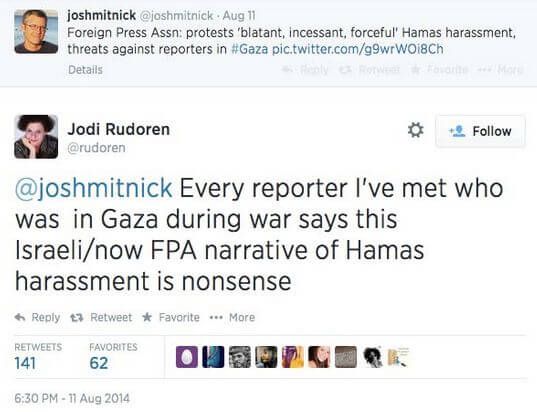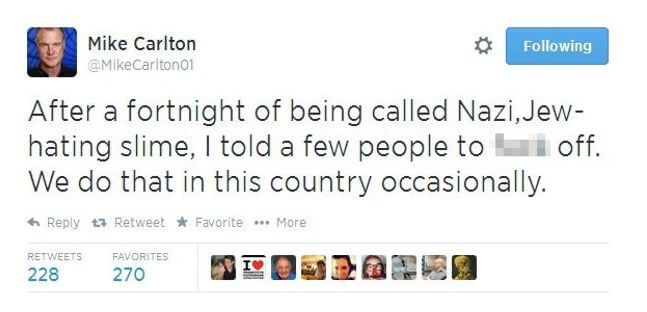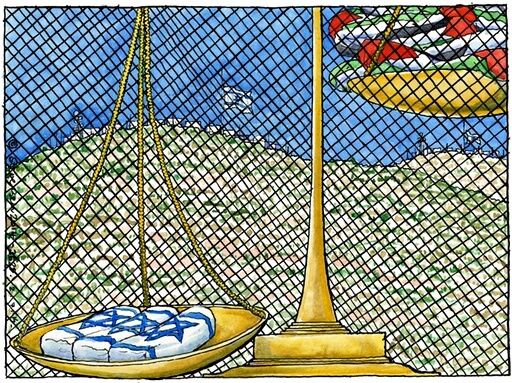Scarlett Johansson’s brave stand against Israel-bashers seems so long ago. With three teenagers kidnapped and murdered, a Gaza war, violence in Jerusalem, an escalating tug of war over the Temple Mount, and unilateral PA efforts in the UN, Israelis will be glad 2014 is over.
Don’t forget the rise of ISIS, Iranian tensions, and frayed ties with the US.
For the first time, we decided to set aside the readers’ choice for the 2014 Dishonest Reporter. We believe readers will agree. More on that below.
We thank everyone for sharing their thoughts on the roller coaster that was 2014. And so, without further ado . . .
The 2014 Dishonest Reporting Awards
1. The 2014 Dishonest Reporting Award Winner: Gaza War Correspondents
2. Dishonest Reporting Award (People’s Choice): New York Times
3. Most Infected Medical Journal: The Lancet
4. Worst Video: Channel 4, Jon Snow
5. Biggest Op-Ed Train Wreck: Sydney Morning Herald
6. Most Dishonest Photo: Jim Hollander, European Pressphoto Agency
7. Worst Blurring of Journalism and Advocacy: Haaretz
8. Most Insensitive Cartoon: The Guardian
9. Most Memorable Gaffe: CNN
![]() 1. The 2014 Dishonest Reporter Award: Gaza War Correspondents
1. The 2014 Dishonest Reporter Award: Gaza War Correspondents
 When we asked HonestReporting readers to choose a recipient for this year’s Dishonest Reporter Award, our community’s clear consensus was the New York Times.
When we asked HonestReporting readers to choose a recipient for this year’s Dishonest Reporter Award, our community’s clear consensus was the New York Times.
There were many valid reasons to go with the popular choice, and we’ll expand on them below. But the more we considered the saturation coverage of the 50-day conflict, the more we realized there were issues far bigger than any one newspaper or personality.
Here’s why we gave the award to the Gaza war correspondents.
![]() 2. Dishonest Reporter (People’s Choice): New York Times
2. Dishonest Reporter (People’s Choice): New York Times
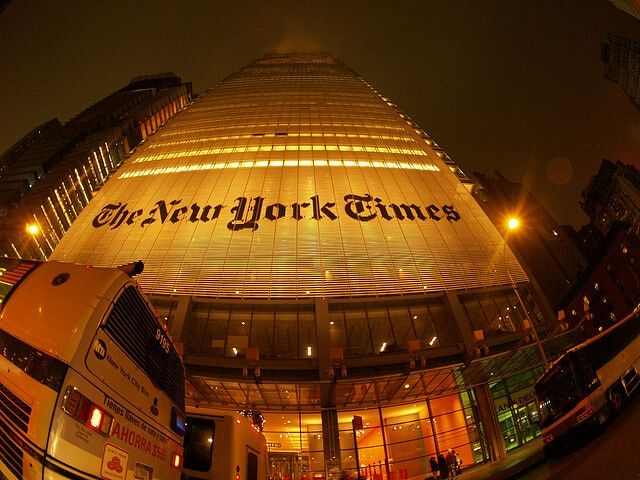 Why did readers choose the New York Times as this year’s Dishonest Reporter?
Why did readers choose the New York Times as this year’s Dishonest Reporter?
What does it say about the “Gray Lady” that it won last year’s Dishonest Reporter Award, and nearly became the first paper to “win” in back-to-back years?
Here’s a sampling of what our readers had to say.
“They win because they are the most prestigious.”
“No other candidate has been as consistently and repeatedly biased in its coverage, and none has as large a circulation to be influenced by this constant bias.”
“The New York Times is THE paper of record. We MUST hold it to the highest standards of professionalism.”
“Why doesn’t the NYT get Israel right?”
Love it or loathe it, the New York Times is the most influential newspaper in the US, and possibly in the world. Its print readership, digital audience, and social media following make the “Gray Lady,” as it’s sometimes called, one of the most widely-read papers in the world. The Times’s scoops in all areas of coverage, be it politics, finance, culture, or sports, make the paper a must-read. Its collection of 118 Pulitzer Prizes (more than any other paper), attest to a real tradition of excellence.
And yet Israel’s supporters have a frosty relationship with the paper. In terms of web traffic and reader comments, HonestReporting’s 2014 critiques of the New York Times consistently struck the strongest chord with readers.
Among the more notable problems:
• A correspondent whose Facebook icon was Yasser Arafat. (Fares Akram has since changed the image and moved to AP.)
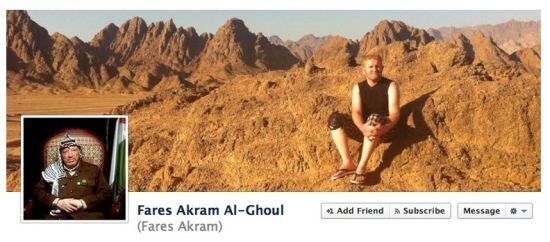
• A report featuring the uncorroborated claims of a Hamas official’s son.
• An opinion editor admitting double standards.
• The public editor’s acknowledgement that the Times needs to do a better job of covering the Palestinians.
• A dispatch dropping the ball on Hamas’s human shields.
• A dispatch failing to ask how Hamas built an extensive tunnel network.
• An op-ed depicting a false reality.
• Photos only telling part of the story.
• An oversimplified infographic on Gaza casualties.
• An out-of-step bureau chief denying media intimidation by Hamas.
Many Israelis may be annoyed by the Times’ “disproportionate” interest in Israel. But the newspaper staff argues that the coverage reflects an unusually special American interest in Israel based on common political and religious values (i.e. Israel sells papers).There is merit to that point.
But the argument works both ways.
Many New York Times staff may be annoyed by HonestReporting readers’ “disproportionate” interest in the Times. But our readers make clear that their interest in the Times reflects its unusually high profile, the exceptional importance of its coverage, and the standards the paper sets for itself (i.e., the flip side of disproportionate coverage.)
The result? Israel and the New York Times both sing the blues. They can’t live with each other, but they can’t live without each other either.
What will the relationship look like over the course of 2015?
![]() 3. Most Infected Medical Journal: The Lancet
3. Most Infected Medical Journal: The Lancet

There’s been a lot of bad blood between The Lancet and Israel over the years. Matters came to a head during Operation Protective Edge when the UK-based medical journal published an “Open Letter to the people of Gaza,” emotively accusing Israel of massacring Palestinians and harshly criticizing Israel’s blockade of the strip.
More than 20,000 people were able to add their signatures to a shorter version of the letter.
It was revealed that two of the letter’s principal authors, Dr. Paola Manduca and Dr. Swee Ang, had sympathies with white supremacist David Duke, and even circulated an anti-Semitic YouTube video produced by the former Ku Klux Klan Grand Wizard.
After initially digging in his heels, editor, Richard Horton realized the platform given to the anti-Semites damaged The Lancet’s credibility. Horton visited Israel to mend fences and apologize.
The fallout?
The Lancet’s ombudsman, Dr. Wisia Wedzicha, criticized the letter’s authors but argued against retracting it. One advisory board member, Professor Eli Pollak, resigned in protest. And Horton announced new collaboration with Israeli medical professionals. Time will tell if that brings some balance to The Lancet. The letter remains online.
![]() 4. Worst Video: Channel 4, Jon Snow
4. Worst Video: Channel 4, Jon Snow
After spending five days in Gaza covering Operation Protective Edge, Channel 4’s veteran news presenter, Jon Snow returned to London where he promptly taped an emotional appeal for Gaza.
Especially unusual about this video was the decision not to air it on regular television, but rather only post it online. UK British laws on impartial broadcasting don’t apply to online videos, even though this was filmed in a Channel 4 facility and branded as Channel 4 content. Discussing the number of casualties among Palestinian children, Snow said:
That is what makes this something that everyone of us has to confront. We have to know that in some way we actually share some responsibility for those deaths . . . We cannot let it go on.
If our reporting is worth anything – if your preparedness to listen, and watch, and read is anything to go by – together, we can make a difference.
Well after the war ended, British news executives continued to debate the video, which overshadowed Snow’s other Gaza coverage.
![]() 5. Biggest Op-Ed Train Wreck: Sydney Morning Herald
5. Biggest Op-Ed Train Wreck: Sydney Morning Herald
It took several days to unfold. But the dust eventually settled over one Sydney Morning Herald column accusing Israel of genocide and ethnic cleansing in Gaza.
1. The SMH apologized for cartoonist Glen LeLievre’s offensive illustration and removed it.
2. Columnist Mike Carlton quit rather than accept a 4-6 week suspension for sending abusive, foul-mouthed emails and tweets to readers; he was not fired, and his departure was not due to the column itself.
Actually, the dust hasn’t fully settled. Earlier this month, Carlton threatened legal action against one public official who said he was “sacked” over “anti-Semitic journalism.”
![]() 6. Most Dishonest Photo: Jim Hollander, European Pressphoto Agency
6. Most Dishonest Photo: Jim Hollander, European Pressphoto Agency
Jerusalem was tense enough with a “car intifada,” street clashes, and fiery Palestinian incitement falsely claiming Israel was encroaching on the Temple Mount.
A new provocation was the last thing Israelis and Palestinians needed, but one photographer irresponsibly played with fire, filing a photo of an Israeli flag appearing to fly from the roof of the Temple Mount.
Photographing the Temple Mount from a vantage point on Mount Scopus, Jim Hollander of the European Pressphoto Agency lined himself up the Dome of the Rock and a large Israeli flag flying atop a building in the Jewish Quarter of Jerusalem’s Old City.

The effect is known as forced perspective, but is often referred to as trompe l’oeil photography (literally, “a trick of the eye”). It creates a false association between two subjects where none really exist. While there’s a place for this style in art, forced perspective is inappropriate for news, and certainly not for sensitive stories.
Technically, Hollander’s original caption was “up front” about the flag’s “lack of depth,” but that detail didn’t make it into the captions in the Los Angeles Times or BBC. After readers contacted the editors, the Times updated the caption, while the Beeb dropped the photograph. A BBC spokesman explained why to the Jewish Chronicle:
“We realised quickly that the picture could be misunderstood and misrepresented, and given the sensitive nature of the story, we updated it with a different picture.”
![]() 7. Worst Blurring of Journalism and Advocacy: Haaretz
7. Worst Blurring of Journalism and Advocacy: Haaretz
Some people in the news industry take objectivity more seriously than others, but everyone pays it at least minimal lip service. After all, if you’re a journalist brazenly wearing an agenda on your sleeve, the credibility of your work suffers and higher-ups won’t like the way you reflect on the larger news service.
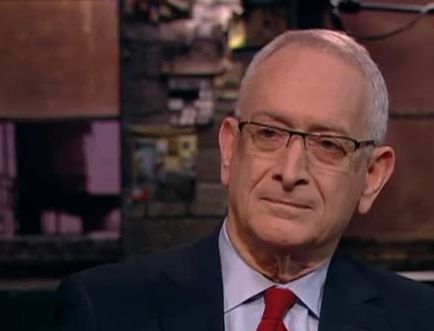
So it’s extremely rare to find media organizations bragging about their biased reporting. Yet such was the case with a Haaretz mass-marketing pitch which included this message from publisher Amos Schocken.
You will become a partner in actively supporting the two-state solution and the right to Palestinian self-determination, which will enable Israel to rid itself of the burdens of territorial occupation and the control of another people.
Haaretz matters if only because the West perceives it as Israel’s paper of record. Its articles and commentaries are cited more frequently by the foreign press corps. Seth Frantzman diagnosed the issue:
The main problem with those reading Haaretz abroad is they don’t understand the conversation they are joining when they read Haaretz. They think they are reading about Israel from a center-left publication, similar to the major newspapers of record abroad, such as the ‘Times’, El Pais, Corriere Della Serra, Le Monde, or Die Welt. But while all these newspapers certainly have political ideologies and reader bases that reflect certain socio-economic and racial demographics, they are nowhere near as insular as Haaretz.
To understand Haaretz, one must understand that its circulation rate in Israel is in the single digits as a percent of the population (20-30,000 readers in print, compared to the largest daily, Yediot, which is read by an estimated 60 percent of Israelis), and that it is read by and written for and within the milieu of a narrow-minded, extremist group.
Blurring the distinction between journalism and advocacy took Haaretz to some strange places this year.
- Schocken’s unprecedented war of words with his own columnist, Ari Shavit: Should readers chalk it up as spirited public discourse? Or was this a case of a publisher concerned with the bottom line pandering to core left-wing subscribers?
- Amira Hass kicked out of a Bir Zeit University conference simply because she was Israeli. Was she attending in her capacity as an opponent to the “occupation” or as a journalist? Both are evidently part of Hass’s job description.
What kind of subscriber drive will Haaretz launch in 2015?
![]() 8. Most Insensitive Cartoon: The Guardian
8. Most Insensitive Cartoon: The Guardian
After the funerals of the three kidnapped Israeli teens, Naftali Fraenkel, Gilad Shaer, and Eyal Yifrah, The Guardian’s staff cartoonist, Steve Bell penned his take. One HonestReporting reader asked about the cartoon’s sick take on the value of Israeli vs. Palestinian lives:
How many Israelis have to die to make Bell feel better?
In the continuous news cycle, speed unfortunately trumps accuracy all too often. CNN took a beating on social media for inadvertently calling November’s Har Nof synagogue massacre a “deadly attack on a Jerusalem mosque.” Red-faced network executives apologized.
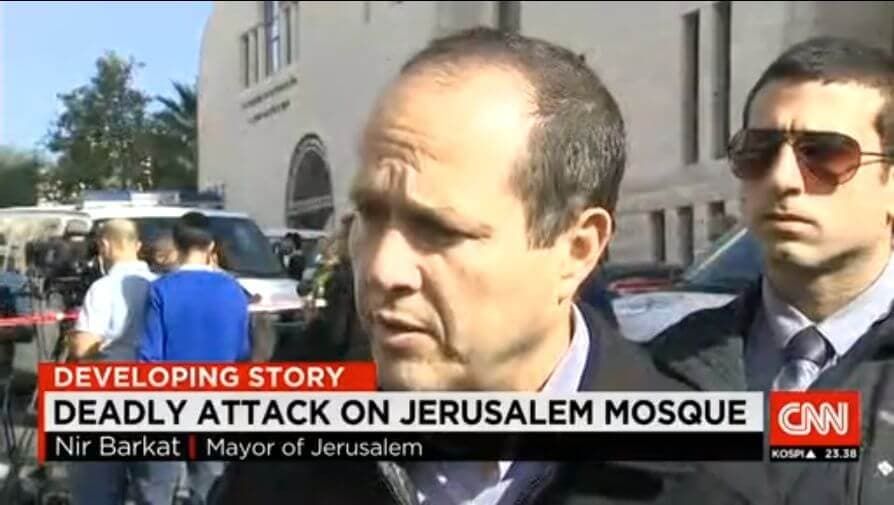
Fortunately for CNN, the gaffe overshadowed a worse incident: Reporter Diana Magnay lost her cool when a group of Israelis harassed her crew. Magnay called them scum on Twitter, for which CNN reassigned her. She’s currently based in Berlin.
* * *
We covered a lot of ground in 2014.
Thanks to our readers for the spirited Dishonest Reporter discussion on our web site, Facebook, and emails.
With our community’s help, we’ll continue to monitor and hold the media to account in 2015.
New York Times CC BY flickr/Alexander Torrenegra; Horton YouTube/Rambam HCC; Schocken YouTube/Channel 8

